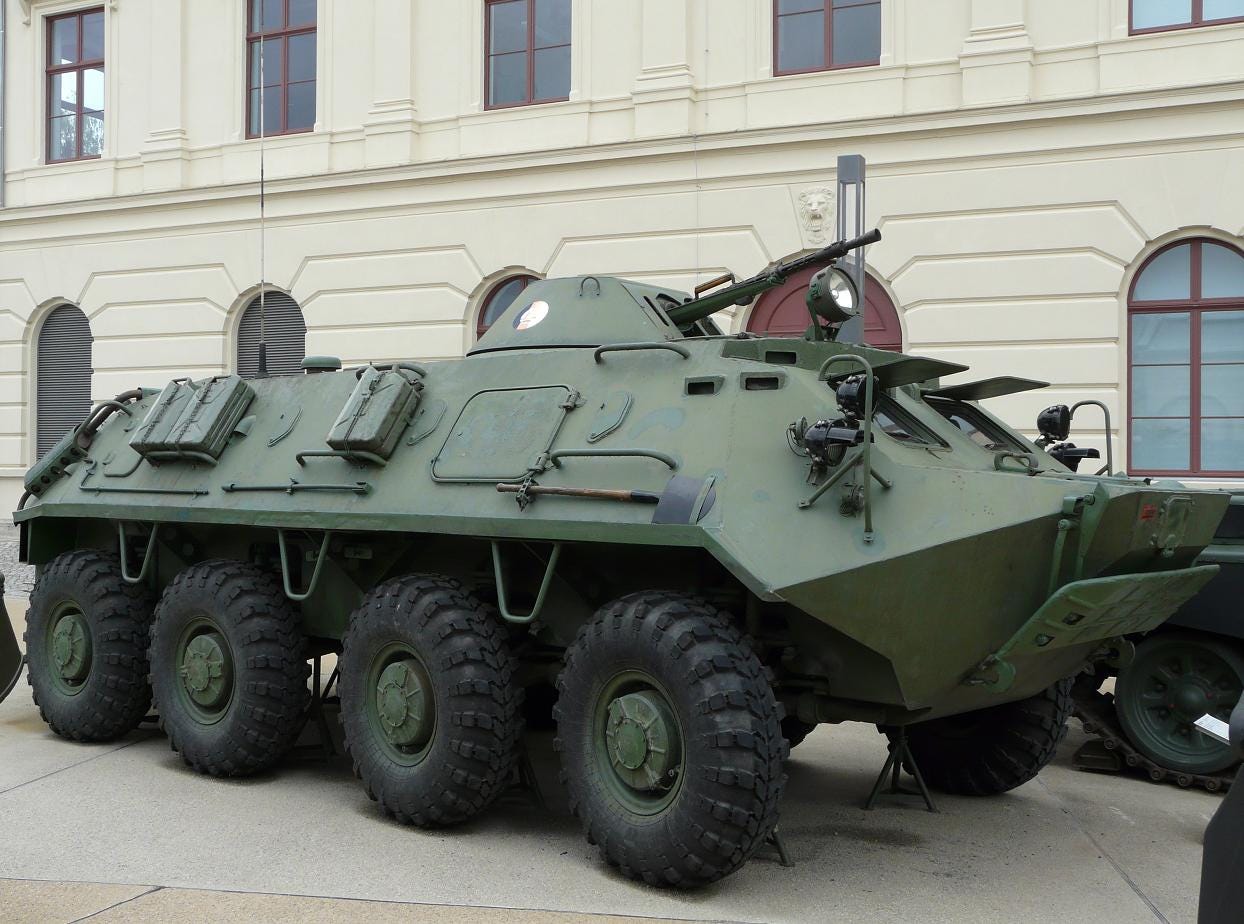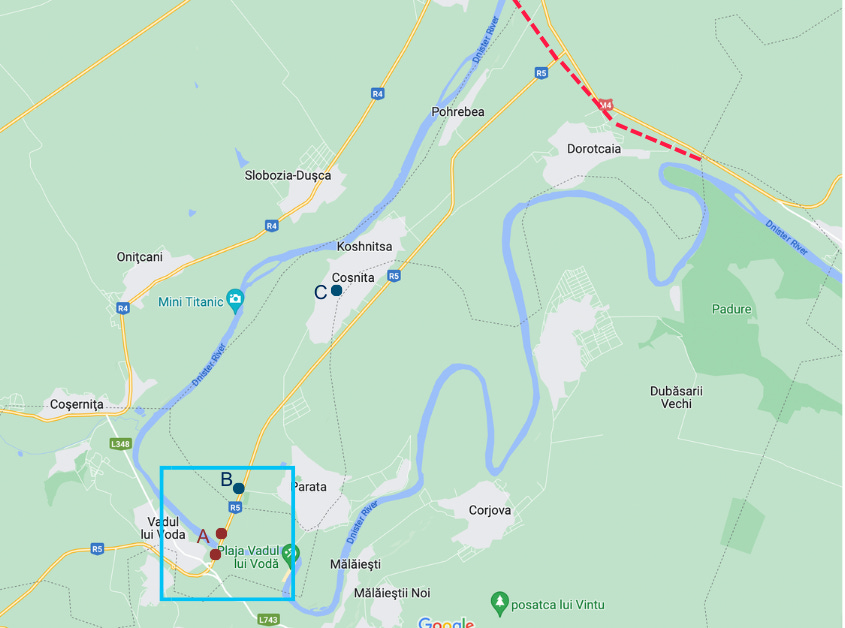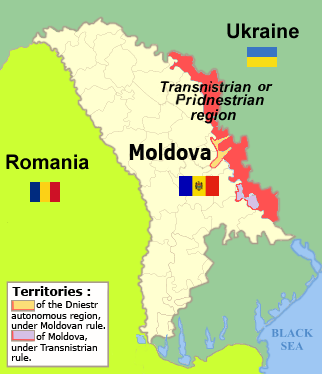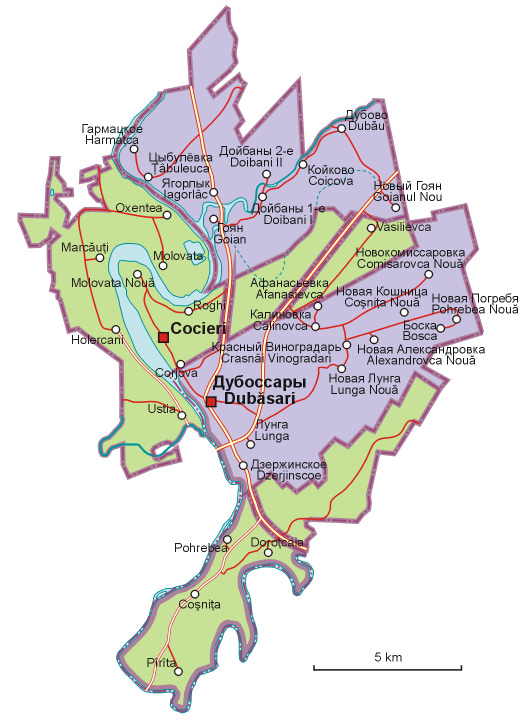Quick Hit: A Russian Show of Force in the Security Zone
A Worrying Provocation by the Russian "Peacekeepers" in Dubasari
Author’s Note: This article concerns an incident in the security zone between Moldova and Transnistria that involves Russian troops making unauthorized movements including with armored personal carriers in a way that threatened Moldovan customs and police officers. The incident is concerning but also very complicated due to the unique and little understood geography of the region in question. The purpose of this article is not to be alarmist - indeed the Moldovan press has barely reported on this issue and no statements by government leaders have been made. The article will report on the facts of the incident as known, but also use this as an opportunity to discuss the complex geographical boundaries between territory controlled by Chisinau and that controlled by the separatist regime.
Semantic Note: This article will refer to the parts of Moldovan territory under the control of the Chisinau government as “Moldova” and the parts under control of the Transnistrian “authorities” as Transnistria. This is done simply to easily describe these regions. All the area in question is in fact Moldova.
The Incident in the Security Zone
On April 20th the Moldovan Delegation to the Joint Control Commission JCC issued a statement to all members of the JCC outlining multiple violations involving the movement of Russian soldiers in the Security Zone.
The full statement can be read here in Russian and here in a google translated copy in English.
Note: The JCC is responsible for coordinating security and maintaining the cease fire in the “Security Zone” separating Moldova from Transnistria. It consists of military delegations from Moldova, Transnistria and Russia with Ukrainian officers joining in an observer capacity and the participation of the Organization for Security and Cooperation in Europe OSCE.
In this statement the Moldovan Delegation outlines multiple instances of Russian “peacekeepers” moving troops and armored personal carriers without notification to the JCC or permission for the moves. Most disturbing was a reported movement from April 19th that reads as follows:
“The situation around the peacekeeping post No. 9 (left) in the area of the Vadul-lui-Voda bridge on April 19, 2023, when another case of unauthorized movement along the route of armored vehicles was recorded (at 04:53), which moved to the customs and police post "Pyryta" and back in a convoy consisting of an armored personnel carrier "BTR-60" and a military truck "Ural", transporting a group of soldiers in balaclavas, not part of the peacekeeping posts No. 9 (right and left).
The uncoordinated and even unannounced movement of military equipment, including armored vehicles, caused confusion among the employees of the customs and police post, and taking into account the fact that the barrel of the standard armament of the armored personnel carrier was directed towards this post, the actions of the military contingent of the peacekeeping forces of the Russian Federation were perceived as a possible attack and became the reason for raising the alarm of the police units in the Central section of the Security Zone,
Only the prompt deployment of officials from the Dubasari Police Inspectorate to the scene of the incident determined the detente of the situation.”

In order to understand what happened here, it is necessary to back up and look a bit at the history of the conclusion of the Transnistrian war.
Background - Moldovan and Transnistrian Enclaves
Transnistria is called this because it is the part of Moldova situated across the Nistru river. In most people’s understanding this river separates Moldova and Transnistria with the bridges crossing the river controlled by the Russian army acting as “peacekeepers.” The reality is somewhat more complicated.
The beginning of armed conflict in Transnistria happened in the city of Dubasari and spread to the surrounding towns. Over the course of the conflict Moldovan police, army and volunteers maintained control over many of the towns in this region and pushed nearly to the Ukrainian border threatening to split Transnistria in two. This, in part, led to the intervention of the Russian 14th Army still stationed in Transnistria as part of a Soviet military deployment. The 14th Army assisted Transnistrian forces in crossing the river and capturing the city of Tighina which they call Bender. At this point the conflict was frozen. The map below shows (albeit not very clearly) the actual “border” including the Moldovan pockets on the Transnistrian side near Dubasari and the Transnistrian pocket on the Moldovan side at Bender.
The following map zooms in on the Moldovan enclaves on the left bank (Transnistrian side) of the river near Dubasari (orange on the map above) with green representing Moldovan control and purple representing Transnistrian control.
As you can see, the Transnistrians retained control over the city of Dubasari meaning that this Moldovan Raion (county) is governed in exile from the town of Cosnita. In the northern green pocket we have a number of small towns which can only directly travel to Moldova via ferry. In the southern green pocket we see the Dubasari peninsula which is where the incident on April 19th occurred.
Quick Note: Looking at these maps it is easy to envision hard borders. For example, the communities that only have access back to Moldova by ferry look cut off. In reality the Security Zone is normally a peaceful place and residents often go back and forth between Moldovan and Transnistrian territory for shopping, to visit relatives and other errands. Foreign travelers experience a hard “border” but local residents move back and forth easily with only an ID card.
The Dubasari Peninsula
The Dubasari peninsula contains 4 villages controlled by Moldova on the Transnistrian side of the river. The region is very popular in Moldova for internal tourism partly because of its unique position in the Security Zone. This is because it is the only part of the Nistru river where Moldova controls both banks. People wanting to camp, fish or swim can do so anywhere along the Nistru but are required to obtain permission from local authorities in areas where the far side is controlled by either Transnistria or Ukraine. This is so that border police, who regularly patrol the shores for smugglers, know that you have a right to be there. This notification is not required in this region. Vodul lui Voda in particular is a place for relaxing on the beach, renting kayaks or jet skis, or staying at number of camps or hotels.

On the map above you see the Dubasari peninsula with the following features marked:
Red Dotted Line - This road represents the effective line of control with Transnistria. As you see in the larger map above, the green pocket actually extends much further than the end of the peninsula - almost to the Ukrainian border. In practice Transnistrian “border control” points are on this road. Access by farmers to their fields on the other side is periodically a problem that the JCC contends with as Transnistria closes access to gain leverage in talks.
Red dots marked “A” - The red dots are on either side of the Vodul lui Voda bridge and mark the location of the Russian “peacekeepers” checkpoints (checkpoint “No. 9 right and left” referenced in the statement). Soldiers stand on station at either end of the bridge with concrete barriers that can be used to block the road and BTR-60 Armored Personal Carriers APCs at either side of the bridge. The APCs rarely move and are more like fixed pillboxes than vehicles at most times.
Blue dot marked “B” - This blue dot represents a Moldovan “Internal Customs Point.” Since Moldova does not recognize Transnistrian independence they do not have any customs clearance entering or leaving the Transnistrian region. This means that it is possible for people and goods to enter and leave Transnistria without the Moldovan government having any knowledge of it. Internal customs points like this one exist to stop trucks and cargo vehicles before they cross the bridge into the rest of Moldova to check import documents and prevent smuggling.
Blue dot marked “C” - This dot represents the Moldovan police station in Cosnita which is the main police station on the peninsula.
Blue square box - The blue square box identifies the area covered by the inset map used in the next section to explain the April 19th incident.
As you can probably understand, this whole area represents a rather strange situation. These 4 towns are under Moldovan control, have locally elected governments and are policed by Moldovan police forces. At the same time the Russian army controls the bridge. In effect this means little in day to day life. The Russians do not have a right to stop cars and basically just stand there guarding a piece of critical infrastructure. Some of the Russian soldiers actually live in the nearby towns and seeing Russian military jeeps pass Moldovan police cars on the road is not at all unusual.
There have been incidents in the past, some mundane and some less so. Up until February 2022 the police usually kept a car posted around 50 meters away from the Russian army checkpoints to keep an eye on them and act as a witness in case of violations. This car was removed without public explanation at the beginning of the war. Since the beginning of the war there have been multiple violations by the Russian troops, but most amounted to them stopping cars and asking questions of the drivers. They have focused on diplomatic cars or cars with Ukrainian license plates.
The April 19th Incident
As outlined in the statement from the Moldovan delegation to the JCC quoted above, on April 19th at 4:54 AM Russian troops left their checkpoint at A on the map and advanced with an APC followed by a truck full of soldiers in balaclavas 1.35 km from the bridge to the internal customs point at B. Moldovan police and customs officers found themselves facing an APC with its main gun pointed at them as well as a truckload of ominously dressed Russian troops. The statement says that the Moldovan officers believed that this was a possible attack and sent a warning to the police station on the peninsula - most likely this meant the Cosnita police station at point C on the first map above. It is most likely these officers who took part in the “operational deployment” that led to the situation’s “detente.”
So What Happened?
Firstly, there is a lot that we don’t know. The only official statement from the Moldovan authorities is the official statement to the other JCC members linked above. This leaves a lot of detail missing on just how this situation unfolded. We don’t know how the Russians gathered a truckload of troops at the bridge where they usually only have a few guards. We don’t know how threatening the situation felt to the police and customs officers who were suddenly facing down an APC with unknown intentions. And we don’t know what “detente” means in practice. Did the Russian troops just leave when more officers arrived? Was there some negotiation and standoff? Did the Russians explain their presence in any way? The official statement paints a picture of a situation that feels very serious both for what was said and what it leaves to the imagination.
One PAS MP, Vitalie Jacot, spoke of the situation for a TV8 interview saying:
"The Transnistrians no longer have those levers of influence over Moldova as they had, but they are still like a rock and a hard place. The forces in the Kremlin demand certain actions from them, which they try not so much to do as to imitate. They are not pleasant actions. The government must take note. We also need to take certain steps. We try to be very diplomatic. Those from the Transnistrian region know very well about those levers at our disposal, which the governments of the previous years did not create. Now we have them.
The situation is under control. The events are not dangerous. However, they must be taken into account. The competent bodies are dealing with this,"
In this analysis, the incident sounds less threatening. A show of force executed by people who really didn’t want to be there. In many ways this analysis makes a lot of sense - Transnistrian authorities have shown little to no willingness over the last year to make an already tense situation more unpredictable. At the same time, their masters in the Kremlin have a lot of sway.
Which leaves the question why did Russia order this action? It is impossible to believe it wasn’t an order from the Kremlin itself. The soldiers in the Security Zone have mostly been a curiosity rather than a threat for the last 30 years. A movement of an army unit to threaten a Moldovan police and customs post is not something that happens without high level approval. So why?
While we might not know the specific reason, we can assume that the general reason is to send a warning to the government in Chisinau. Moscow is saying that they have the ability to make trouble if they want too. Perhaps this was sparked by Moldova’s refusal of entry for the leader of Tatarstan last week or the subsequent expulsion of a Russian diplomat from their embassy in Chisinau. At the time the only Russian response was to say that the actions were “unfriendly.” This seemed odd because Russia generally engages in a tit for tat response, for example, expelling a Moldovan diplomat from the embassy in Moscow. Perhaps the Kremlin decided to send a harder signal indicating that they can respond in unpredictable ways?
We may never know the full explanation of this incident. What we do know is that Russia retains the ability to use its troops in Moldova to threaten escalation. The choice of the Dubasari peninsula was almost certainly carefully made. If the Russian army had advanced from another bridge to a similar internal customs point in the direction of Chisinau, it would have likely triggered a rapid response reaction from the Moldovan Army. In this instance Russian troops were able to advance on a Moldovan police position while simultaneously driving further away from Chisinau and the rest of Moldova. In a sense this was a perfectly chosen place to send a message without creating so much alarm that you would be reading this on the front page of CNN.
As news about this incident evolves we’ll come back with updates. For now, it is important never to forget how close this war and the Russian threat is to Moldova.







This is why we read "Moldova Matters". Thank you for the in-depth analysis and excellent maps!